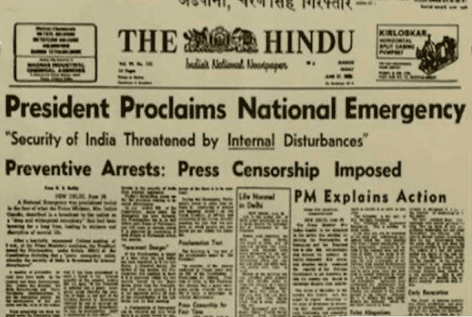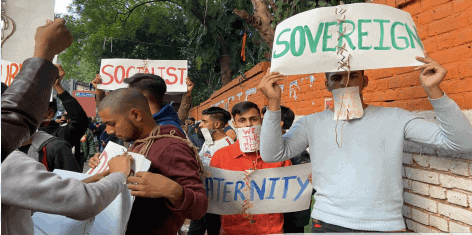An overview over previously amended UAPA, aimed to counter terrorists, has resulted in terrorised dissidents instead.
Free speech, political dissention, and even mild criticism, might get anyone designated as ‘terrorist’ by the Centre, ever since Home Minister Amit Shah, in a sovereign state, proposed the amended version of an already ‘draconian law’ called, Unlawful Activities Prevention Act (UAPA), and it somewhat suits the ‘rishta vohi soch nayi’ narrative with its uncanny resemblance to the Rowlatt Act of 1919 set by the colonisers to criminalise protests.
What is UAPA?
In 1967, UAPA was passed for the first time in the parliament, and it gave the entitlement to the government to designate any ‘organisation’ as ‘unlawful.’ It further defined and criminalised what it seemed as unlawful. However in 2004, Manmohan Singh led Congress further amended it without getting it scrutinised by the special committee. The government was disposed with more power, defined terrorism, and could declare any organisation as ‘terrorist.’ It also empowered the police with enhanced power of interrogation, which was often abused as a harassment tool.
What does the 2019 amendment say?
The recent changes proposed by the Home Minister Amit Shah, which were passed in the Lok Sabha owning to heavy NDA majority and smooth relations in Rajya Sabha, allowed the interference of National Investigation Agency (NIA) to mess with the federal system, and most importantly declare any ‘individual’ as opposed to what was ‘organisation’ as ‘terrorist.’ This too was passed sans the scrutiny of the select committee.
Who are the categorically individual terrorists?
The Home Minister made it very clear that individuals who participate, fund, or engage in raising funds for terrorist activities, shall be treated along the lines of this act.
Most importantly he said, “those are terorists who attempt to plant terrorist literature and terorist theory in the minds of the young, guns do not give rise to terrorism, the root of it is the propaganda that is done to spread it.”
The Problematic Aspects
At no point does the law define what is terrorist literature and theory, for all one may have a copy of The Communist Manifesto and the Centre can use that as evidence.
Also what is the urgent need of the government to go after individuals specifically, when under chapter four of the same act provides for the accused to be prosecuted and punished if found guilty by the courts? Perhaps it’s that ‘if’ they want to win over, by curtailing a person’s right to get bail, or proper redressal. On average 75% cases under UAPA ended in acquittal over three years ending 2016 as per Business Standards’ analysis of NCRB data. It only raises skepticism if the Centre is trying to overstep this trend by removing the redressal system all and for once.
Who all are booked under this so far?
Jaish-e-Mohammad founder Masoor Azhar, Lashkar-e-Taiba founder Hafiz Saeed, Lashkar-e-Taiba leader Zakiur Rehman Lakhvi and underworld don Dawood Ibrahim. However, individuals with no organisation backing who were arrested post the amendment included Kashmiri photojournalist Masrat Jahan, Kashmiri journalist Gowhar Geelani, peasant leader Akhil Gogoi, student leaders, Meeran Haider, Safoora Zargar and Umar Kahlid.
Conclusion
There’s scope of some appeal in this contentious law which would take minimum 100 days and maximum uncertain days, for the heeding to go through the Home Ministry which itself labelled the accused as terrorist in the first place, and review committee, until then, one is a terrorist until proven otherwise, without grant to bail, or lawyer, and it’s all because the State with enhanced centralised power in a democracy simply believed so without any evidence.
Featured Image Credits: The Quint
Umaima Khanam





